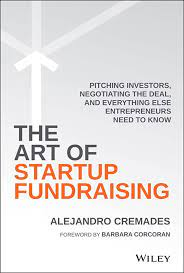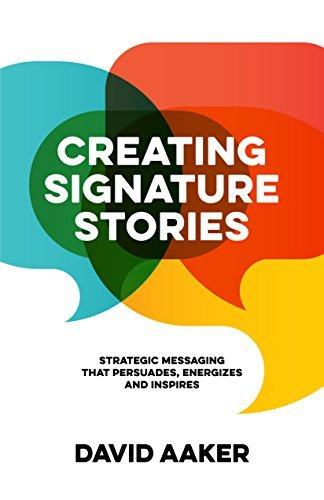Before winning money, you have to win attention. Between the lines, The Art of Startup Fundraising conveys very clearly such a message.
Investors are busy people (and often reluctant to invest). On average, they spend 3 and half minutes on a pitch deck whilst it is overcrowded out there. I heard that for every startup there are at least 30-40 competitors.

Through the book, which dates back to 2016 but remains a great roadmap and practical guide, the author Alejandro Cremades – an entrepreneur himself – provides a hands-on how-to for entrepreneurs eager to raise seed funds.
One section, in particular, captured my attention: the chapter about pitching. Business plans are key, but without a pitch deck, it is almost impossible to raise. In other words, worst-case scenario, better having a pitch deck ready.
“Remember that the most precious and priceless assets you can gain as a founder are contacts and people’s attention. So don’t burn trust.”
(Alejandro Cremades)
Very interestingly, the author holistically approaches the pitching issue. Which is something very useful. Long story short, he argues a startupper has to integrate three tools:
👉 The elevator pitch. That is, tell what your company is about in a few sentences. Ideally in 30’’ you will be able to get the attention of your interlocutor.
👉 The pitch deck. Short concise, compelling and directed to the specific investor you want to attract (yes, research shows there is no correlation between the number of pitches delivered and investors attracted, so…)
👉 The one-pager. A document which summarises the business plan, the elevator pitch and the pitch deck.
The key is to be consistent with your message whilst keeping that operational agility for you to be always on. In other words, fundraising is a 24/7 activity, almost a state of mind. You never know when the opportunity will knock on your door. Thus better to be ready.
I find this particularly true. Personally speaking, I remember having won the attention of a prospective business angel just by showing him a picture of my mock product on my phone. He was sitting on a sofa in a foyer. That was my kind of elevator pitch. He asked for my e-mail. After two weeks, he invited me to a 1-1 pitching session and I used my pitch deck. To then send over my one-pager in the aftermath of the meeting. That’s it.
The book provides the reader with super practical advice on many other fronts. However, it would need an update considering how things are rapidly developing in the field (for instance, the crowdfunding section could be refreshed). Nevertheless, it remains a good starting point.
An excellent synthesis of the book is provided on the following website.
- SEO Powered Content & PR Distribution. Get Amplified Today.
- PlatoData.Network Vertical Generative Ai. Empower Yourself. Access Here.
- PlatoAiStream. Web3 Intelligence. Knowledge Amplified. Access Here.
- PlatoESG. Automotive / EVs, Carbon, CleanTech, Energy, Environment, Solar, Waste Management. Access Here.
- BlockOffsets. Modernizing Environmental Offset Ownership. Access Here.
- Source: https://thisisoliver.co/2023/07/01/if-you-are-a-startupper-in-search-of-a-seed-investor-it-is-worth-reading-and-using-this-book/
- :has
- :is
- 1
- 2016
- a
- Able
- About
- activity
- advice
- After
- aftermath
- alejandro
- always
- an
- and
- Angel
- approaches
- ARE
- Argues
- Art
- AS
- asked
- Assets
- At
- attention
- attract
- attracted
- author
- average
- back
- BE
- Better
- between
- book
- burn
- business
- business plan
- busy
- but
- by
- CAN
- captured
- Chapter
- clearly
- CO
- company
- compelling
- competitors
- considering
- consistent
- contacts
- content
- Correlation
- could
- Crowdfunding
- Dates
- delivered
- developing
- directed
- document
- Dont
- Door
- eager
- Elevator Pitch
- embedded
- Entrepreneur
- entrepreneurs
- Every
- excellent
- few
- field
- Files
- Find
- For
- founder
- fronts
- Fundraising
- funds
- Gain
- get
- good
- great
- guide
- Half
- hands-on
- Have
- having
- he
- heard
- him
- How
- However
- HTTPS
- i
- if
- impossible
- in
- In other
- instance
- integrate
- Invest
- investor
- Investors
- invited
- issue
- IT
- just
- keeping
- Key
- Kind
- Know
- least
- lines
- Long
- many
- max-width
- me
- meeting
- message
- mind
- money
- most
- my
- Need
- never
- Nevertheless
- no
- number
- of
- often
- on
- operational
- Opportunity
- Other
- over
- particular
- particularly
- People
- people’s
- Personally
- phone
- picture
- Pitch
- pitch deck
- pitches
- pitching
- plan
- plans
- plato
- Plato Data Intelligence
- PlatoData
- Point
- Practical
- Precious
- priceless
- Product
- prospective
- provided
- provides
- raise
- rapidly
- Reader
- Reading
- ready
- remains
- remember
- research
- roadmap
- scenario
- Search
- Section
- seed
- send
- session
- Short
- showing
- Shows
- Sitting
- So
- something
- speaking
- specific
- spend
- Starting
- startup
- State
- Story
- such
- Super
- tell
- that
- The
- then
- There.
- they
- things
- this
- three
- to
- tools
- true
- Trust
- two
- Update
- used
- using
- very
- want
- was
- Weeks
- What
- when
- which
- Whilst
- will
- win
- winning
- with
- without
- Won
- WordPress
- words
- worth
- would
- yes
- you
- Your
- youtube
- zephyrnet












